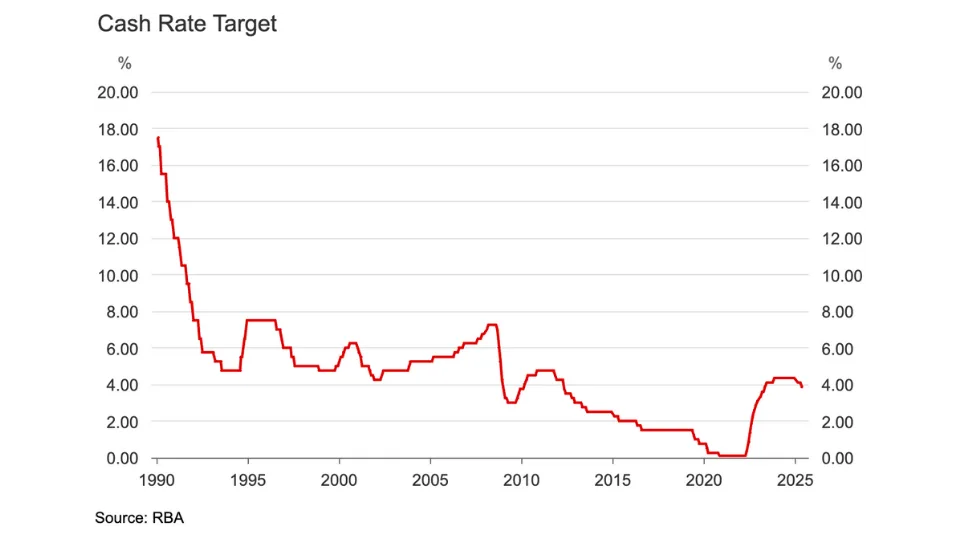After a sharp Netflix share price decline, is the streaming giant offering long-term investors a buying opportunity or signalling tougher times ahead?
Netflix (NASDAQ: NFLX) stock fell 10% overnight after its latest quarterly earnings report revealed mixed results and a cautious outlook.
The headline numbers looked solid, but a one-off tax hit in Brazil and softer-than-expected cash flow sent investors reaching for the remote.
So, was this a temporary glitch or a sign that the streaming powerhouse is entering its next, slower phase of growth?
Netflix posted 17% revenue growth to US$11.51 billion, broadly in line with expectations, and an operating margin of 31.5%. However, a US$619 million tax expense in Brazil knocked its earnings per share (EPS) down to US$5.87, below Wall Street forecasts of about US$6.97.
Free cash flow vs profit growth
Despite that one-off charge, Netflix raised its full-year guidance for both revenue and free cash flow. Management now expects around US$45.1 billion in sales and US$9 billion in FCF for 2025. That compares with roughly US$6.9 billion last year, showing that the business is now generating meaningful cash after years of reinvestment.
Even so, cash generation continues to trail reported profits. In the latest quarter, free cash flow rose 21% year on year to US$2.66 billion, but that growth has been far more uneven than earnings.
The gap matters. EPS reflects accounting profits, while free cash flow represents the real cash left after producing and licensing content. It is what Netflix can use to repay debt, buy back shares, or reinvest in new shows.
In Netflix’s case, that divergence comes down to how it accounts for its content library. The company pays billions upfront to make or acquire shows, but those costs are spread over time through amortisation. This makes profits look smoother than the cash flow behind them.
The result is that Netflix’s income statement tells a cleaner story than its bank balance. Profitability has improved over the years, yet cash flow still fluctuates with production cycles and investment commitments.
Put simply, Netflix is earning more on paper than it is converting into cash. That is common for large-scale content producers, but it highlights where the company’s next challenge lies. Sustaining growth will depend less on signing up new subscribers and more on turning profits into consistent, recurring cash generation.
The business behind the binge
Netflix is still a pure-play streaming platform, unlike rivals that can lean on other income streams. Disney (NYSE: DIS)
earns from theme parks and merchandise. Amazon (NASDAQ: AMZN) has e-commerce and cloud computing. Netflix has one main lever: keeping people watching.
That focus means it must consistently produce global hits to retain subscribers and justify higher prices. It also explains why content spending remains enormous, even as the company becomes more disciplined with costs.
In 2023, Netflix stopped reporting subscriber numbers and shifted attention to engagement and revenue per member. The move reflects a business maturing beyond pure subscriber growth. It gives investors a clearer view of profitability, though it removes an easy metric to measure momentum.
Scale is still Netflix’s biggest advantage. Operating in more than 190 countries, the company collects vast data on viewer preferences and trends. That intelligence feeds into its recommendation algorithms, guiding everything from production budgets to marketing decisions. Local language content, tailored suggestions, and now advertising options are helping Netflix deepen its global reach.
However, competition is intensifying. Free, ad-supported platforms such as YouTube, Tubi, and Pluto TV are attracting millions of viewers and brands looking for cheaper exposure. At the same time, the cost of producing premium content remains enormous.
The market’s message is clear: the hyper subscriber growth of 2020 and 2021 is no longer enough. Investors now want a profitable expansion built on cash generation, not just headline subscriber gains.
Could Netflix buy its way to more hits?
Original content has become both Netflix’s strength and its biggest expense. Creating global blockbusters like Stranger Things and Squid Game costs billions, and the competition for viewer attention keeps rising.
That’s why news of Warner Bros. Discovery (NASDAQ: WBD) exploring “strategic alternatives” has caught so much attention. The company, owner of iconic franchises such as DC’s Superman and Batman, Harry Potter, and HBO hits like Game of Thrones and The Last of Us, has reportedly put itself on the table for potential buyers.
The idea of Netflix acquiring or partnering with a studio like Warner Bros. is intriguing. Owning such intellectual property would instantly deepen its library and reduce reliance on producing every hit from scratch. It could also strengthen Netflix’s position in the global licensing and merchandising space — areas it has yet to fully monetise.
The challenge would be scale. Warner Bros. Discovery carries significant debt and a complex legacy business structure that spans TV, film, and news. Any potential deal would be enormous, even for a company of Netflix’s size.
Still, the situation highlights an important shift in the streaming industry. The next phase of competition may not be about who can add the most subscribers, but who controls the most valuable stories — the characters and worlds that keep people coming back.
My view
When the crowd fixates on whether earnings beat or miss analyst forecasts, clear-headed investors have an opportunity to step back and think longer term.
In Netflix’s case, sentiment has swung wildly in both directions. In 2022, pessimism was overdone. Now, after a more than sixfold rebound, the pendulum has arguably swung the other way. The valuation reflects a lot of optimism, while the business itself remains sound — cash-flow positive, global in reach, and still one of the most watched platforms on the planet.
For me, this moment calls for second-level thinking. Rather than reacting to quarterly noise, it’s worth asking whether Netflix can maintain the pace of key growth metrics as it matures. The challenge now is turning scale and creative execution into durable, recurring cash generation.
What stands out to me is the power of intellectual property. When a company owns stories and characters that audiences love, and can monetise them across films, series, games, merchandise, and licensing, it creates a self-reinforcing business model.
That’s what makes franchises like DC, Harry Potter, and Game of Thrones so valuable. The challenge is turning that brand power into consistent profits, something Warner Bros. Discovery has yet to achieve.
Both Warner Bros. Discovery and Netflix have their respective challenges, but patience and perspective remain the investor’s edge. Markets tend to overreact, and when businesses built on strong economics and loyal audiences become “too cheap,” it can be a great time to strike.
I don’t think we’re quite there yet.









